Testing new handwashing kit at scale in Tanzania refugee camp
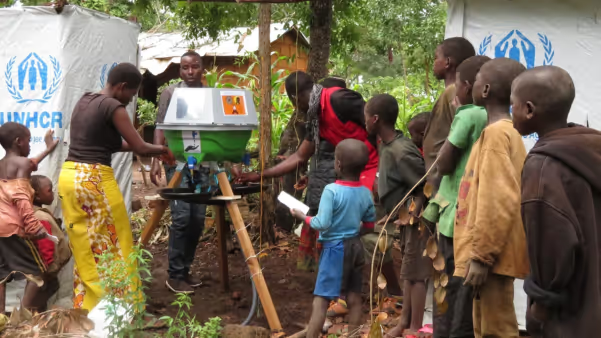
I arrived in the Nduta refugee camp in March 2018 only to find that it was the peak of the rainy season. How quickly a river can form around your feet! But the good news was that this would prove to be an excellent testing ground for the new prototype as previous tests had raised questions about whether the stands would be stable in the rain and the wind.
The new design has been funded by Elrha’s Humanitarian Innovation Fund as part of their Handwashing Challenge and aims to be more user-friendly and water-efficient than the old tippy-tap system of suspended jerry-cans with a foot pedal to tip first liquid soap, then water over their hands. The Handy Wash Tap (which is part of the handwashing stand) and the water collection tray prevent water and soap from splashing on people, making the whole process more dignified.
A batch of 34 new stations were delivered to the Oxfam warehouse in the camp and were quickly assembled by the water engineers and volunteers using IKEA-style instruction manuals.
The aim of the trial was to find out if people would be more inclined to wash their hands because of the design of the handwashing stand. We loaded up the trucks and headed to meet the people in the villages in the camp who had agreed to participate in the trial of the design by replacing their old tippy-tap system with the new kit.

Over the next two days, we installed 32 stands with 66 families in two different parts of the camp, with another two washstands placed in a primary school, one next to the girls’ toilet and another at the boys’ toilet. Each kit was then made ready for use by filling with water and attaching a piece of bar soap.
People enjoyed taking part in the trial and really like the easier-to-use design. While the tippy-tap system is a slightly cheaper option, mothers can struggle to wash their children’s hands with the jerry-can wobbling and splashing water everywhere – making people reluctant to wash their hands in the first place.
One mother, Nadia, confirmed that the new system was an improvement:
“Children didn’t like to come and wash their hands, but these days things have changed.”
The mirrors on the new stands increase usage and keep young children occupied while their mothers wash their hands.
Diarrhoea and respiratory illness are reported to be the leading causes of death among children under five, and dirty hands in mouths after the toilet is a major contributor to this. So I was very happy to see how much easier mothers found it to wash their children’s hands.
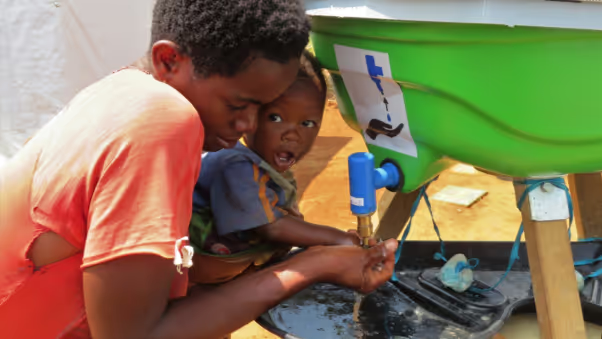
In the school, water was being provided directly from the taps and at high pressure, thus extremely wasteful, and the loose bar soap provided was often going missing. With the Handy-Wash Tap, children spent more time and attention on cleaning their hands (with soap and water) while watching themselves in the mirrors as compared with the rushed manner they quickly rubbed their hands under the high-pressured taps – often without using soap.
The updated design has proved easier to use for everyone particularly children, older people, mothers with children. People with physical disability that are unable to use the foot pedal on the ordinary Tippy Taps also testified to finding it easier to use the new design. It is very sturdy and the rain kept the stands clean from the dust of the dry season; it also looks good which makes people feel proud to own and use it. Watch this video to see both the Tippy Tap and improved Handy Wash Tap in action.
As a result of the successful trial, Oxfam is now looking to start mass production later this year after another trial in Uganda. Then we hope to share this new handwashing station with the world.
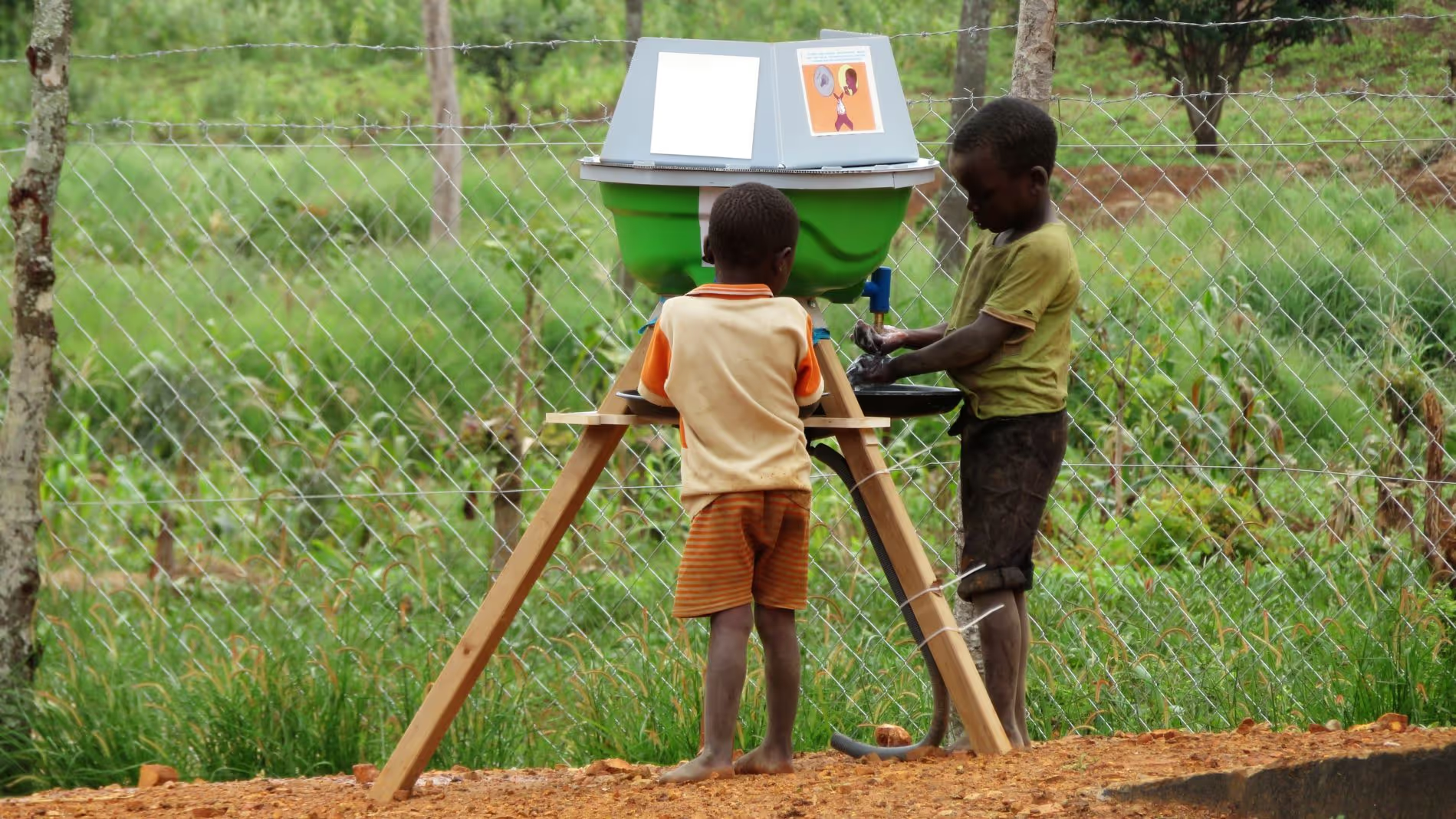
By Joel Trotter, Design Project Officer.
Photo Credit: Oxfam / Joel Trotter
Stay updated
Sign up for our newsletter to receive regular updates on resources, news, and insights like this. Don’t miss out on important information that can help you stay informed and engaged.
Related articles
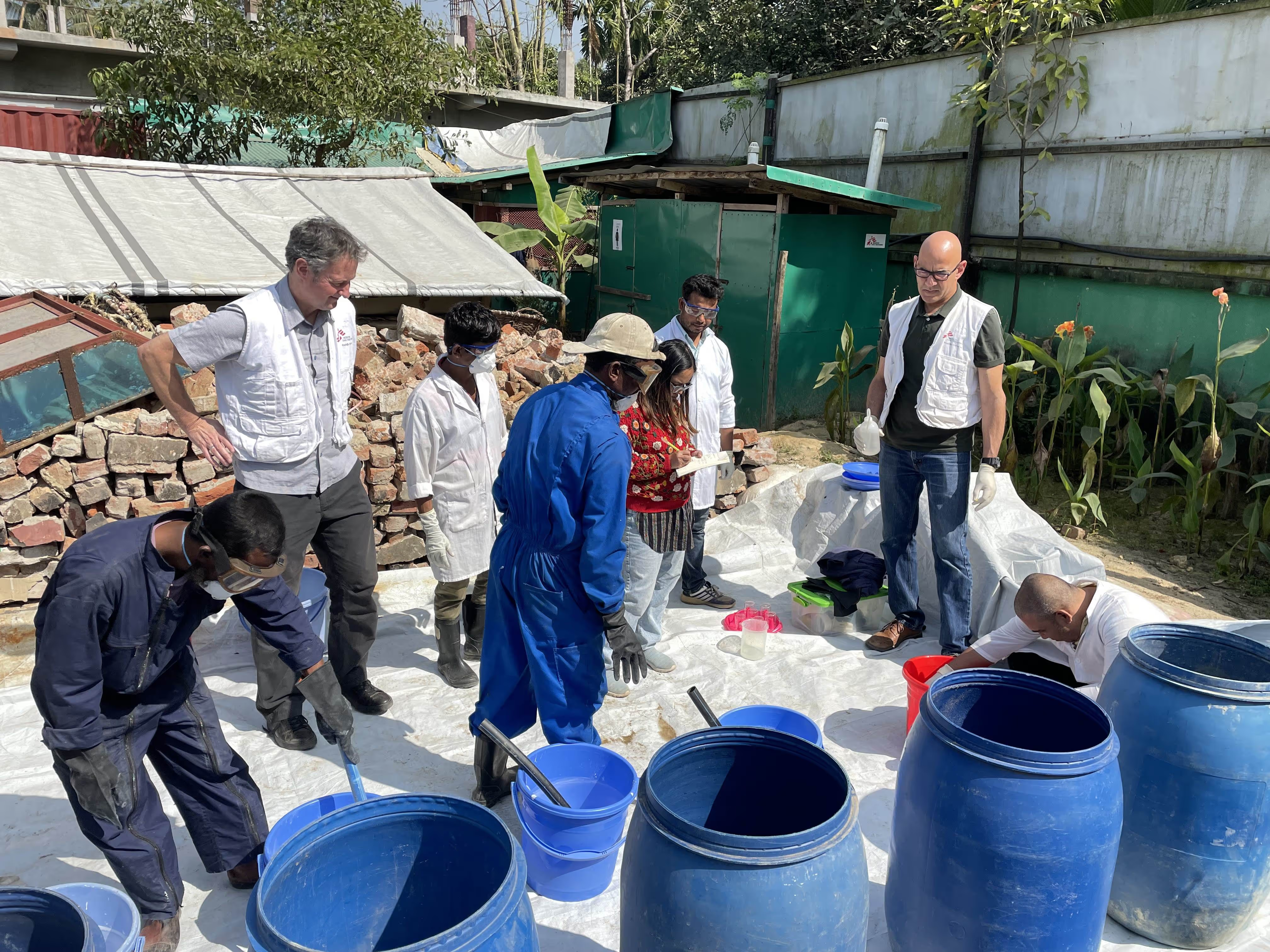

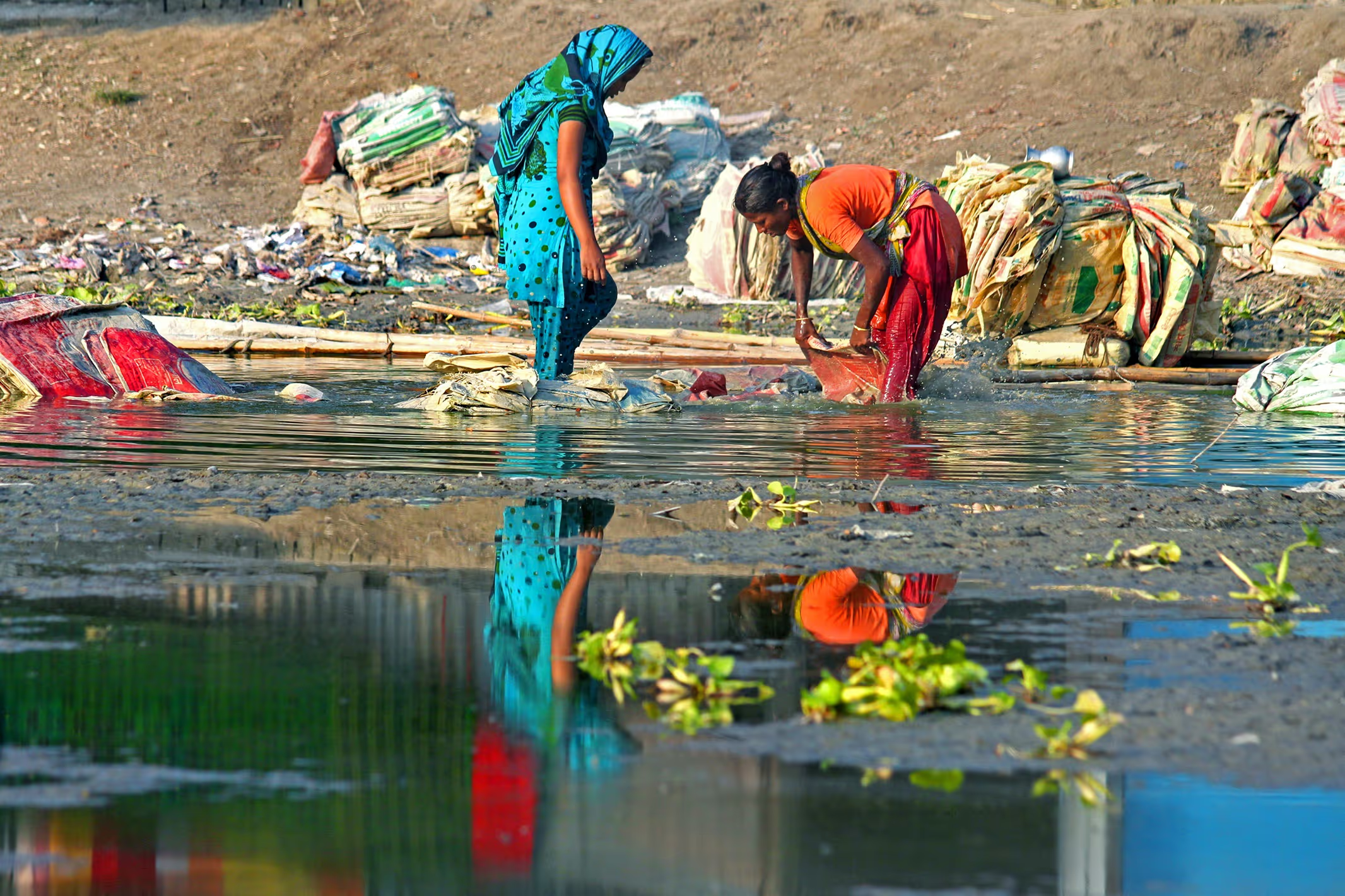
Explore Elrha
Learn more about our mission, the organisations we support, and the resources we provide to drive research and innovation in humanitarian response.